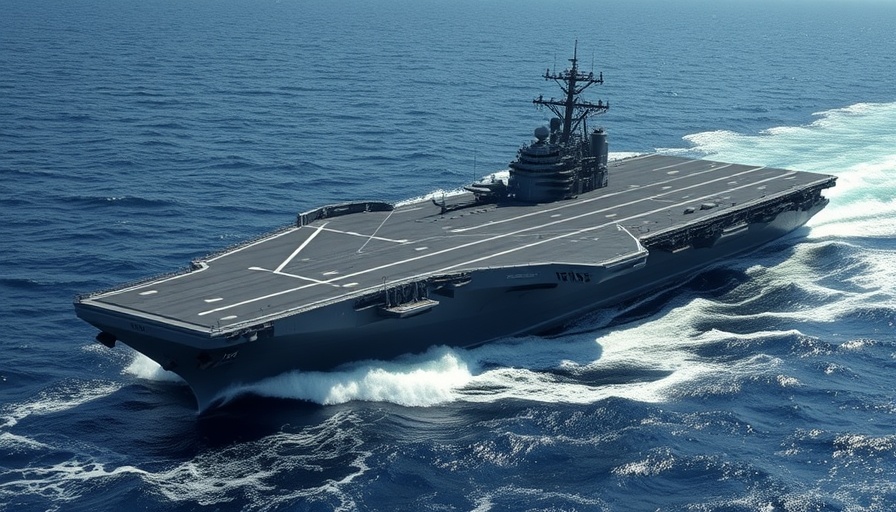
The F-35 TR-3: A Game-Changer for Military Aviation
At the recent Paris Air Show, excitement echoed through the halls as executives from Lockheed Martin announced the completion of the highly anticipated Technology Refresh-3 (TR-3) upgrade for the F-35 Lightning II. After a lengthy development process that began in 2021, the TR-3 is not just a minor tweak but rather the most significant upgrade in the fighter's history. This revamped system promises to enhance the aircraft's combat capabilities, artificial intelligence (AI), and mission control functions in unprecedented ways.
What This Upgrade Means for Our Military
For military personnel and their families, understanding these enhancements is crucial. The TR-3 upgrade is integral to the Block 4 capabilities of the F-35 and comes packed with more than 75 hardware and software updates. These changes will provide the F-35 with a new integrated core processor capable of 25 times the computing power of its predecessor. This advancement means enhanced sensor technology, more effective electronic warfare features, and improved interoperability with allied systems. Such upgrades directly translate to greater operational readiness and effectiveness for our military forces.
Behind the Delays: Challenges Faced
While the TR-3 is a promising development, it’s important to recognize the challenges that have accompanied its rollout. Originally scheduled for completion in April 2023, the upgrade faced various delays due to software issues. Consequently, many F-35s delivered during this interim period were treated as training aircraft rather than combat-ready units. These hurdles highlighted the complexities surrounding advanced military technology and the pressing need for timely upgrades in modern warfare.
The Future of F-35 Capabilities
As we look forward, there’s uncertainty about additional upgrades and radar improvements. Air Force Chief of Staff Gen. David Allvin noted potential issues with new radars that could impact the F-35’s overall performance. This situation serves as a reminder that while advancements are positive, they are often accompanied by challenges that require our military leaders to be adaptable and proactive. Moreover, as Lockheed Martin continues to develop new capabilities, the collaborative efforts with our military can create pathways for veterans transitioning to civilian careers in aerospace and technology sectors.
Connecting the Dots: Military Service and Civilian Careers
For military families planning their next steps, it’s vital to understand the potential avenues available in high-tech industries once service concludes. Programs like AristaHire aim to assist veterans in translating their military experiences into civilian careers, emphasizing skills developed during service. With upgrades like the TR-3 highlighting the importance of tech in defense, there are numerous opportunities for veterans to leverage their backgrounds in exciting, innovative roles.
Honoring Our Military Heroes
As these advancements unfold, it’s a fitting moment to honor the bravery and dedication of our service members. Whether through the cutting-edge capabilities of the F-35 or the stories of valor shared in our communities, we can celebrate the contributions of those who serve. Their courage in combat and innovative spirit in technology development pave the way for a brighter future.
The F-35 TR-3 promises to strengthen our military’s foothold in advanced warfare while providing a backdrop for invaluable career pathways for veterans. So, as we look ahead, let us advocate for continuous support and opportunities for those who have bravely served. For military families, staying informed about these developments can make a significant difference in planning for the future.
 Add Row
Add Row  Add
Add 




Write A Comment